During our 2 months in India, the region of Rajasthan in the north was the most intense place we visited. The sheer number of people, the chaos and the animals in the streets would exhaust even the most experienced travellers. Those travelling to Rajasthan must prepare themselves for an intense journey, full of persistent stares, traffic and beeping horns, strong smells, and people asking for photographs. Despite this, Rajasthan possesses extraordinary beauty, with its historic palaces, delicious food and rich culture to explore. 15 days, or 2 weeks, for us was just the right amount of time to fully savour the Rajasthani culture. This is our 15 day Rajasthan itinerary and useful tips for experiencing it at its best!
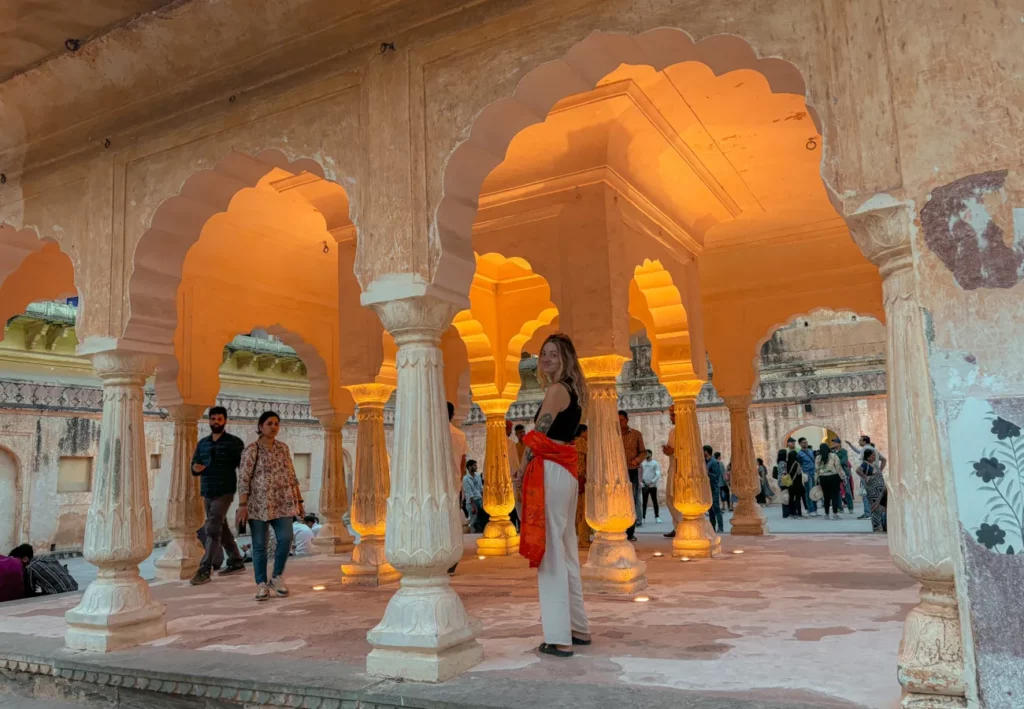
Rajasthan interactive map
Getting around in Rajasthan
There are two main ways to get around Rajasthan: use public transport such as trains or local buses or hire a driver for all your travels. Hiring your own car or motorbike is highly discouraged given the amount of traffic and potential for accidents. Take a look below at the pros and cons of both ways.
Travel insurance is a must for any holiday abroad, especially in Asia. Although problems rarely occur, it is better to be covered in case they do. We use SafetyWing and recommend it to anyone travelling the world. Check out SafteyWing here.
Getting around by local transport
In Rajasthan, it is possible to travel very cheaply between the main cities with local buses or trains. A bus ticket will only cost you 200 / 300 rupees (about 2-4 euros) for a 5-6 hour journey in a bus without air conditioning, or 400 / 600 rupees (about 4-7 euros) for the same journey in an air-conditioned bus. Booking bus and train travel is easy and conveniently possible on the 12go.asia website, in advance and at no extra cost. In the article below you will find all the links to book buses between the various destinations in Rajasthan.
When booking train and bus tickets abroad, we always use 12go.asia. You can check timetables and prices online and it’s often cheaper than booking in person! Check our 12go.asia here.
The downside of this method of transport is the slowness, unpredictability and the amount of people you will find on board. Local buses often stop constantly to pick up people even when the bus is packed with people already seated and crammed in the aisles. The average length of these bus journeys is also 5 or 6 hours minimum, making the journey very tiring and sometimes nerve-racking. As for the regional trains, the situation might be similar.
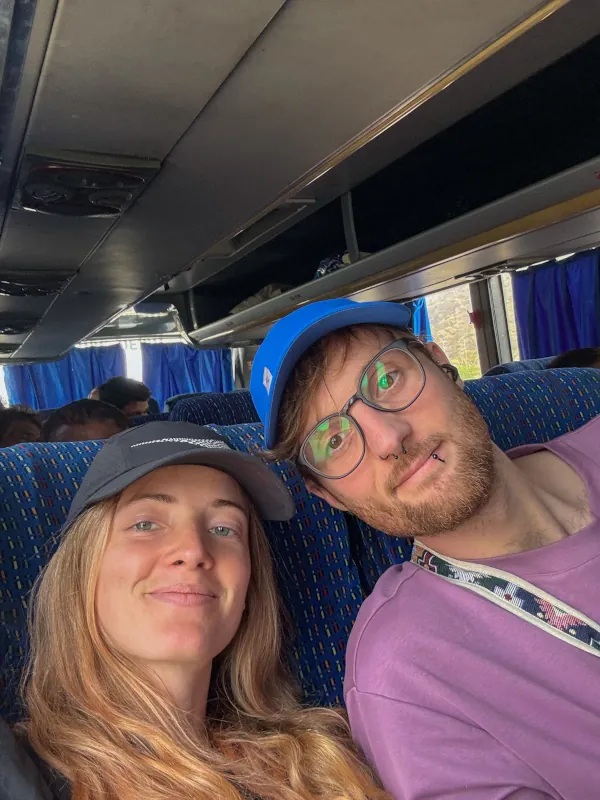
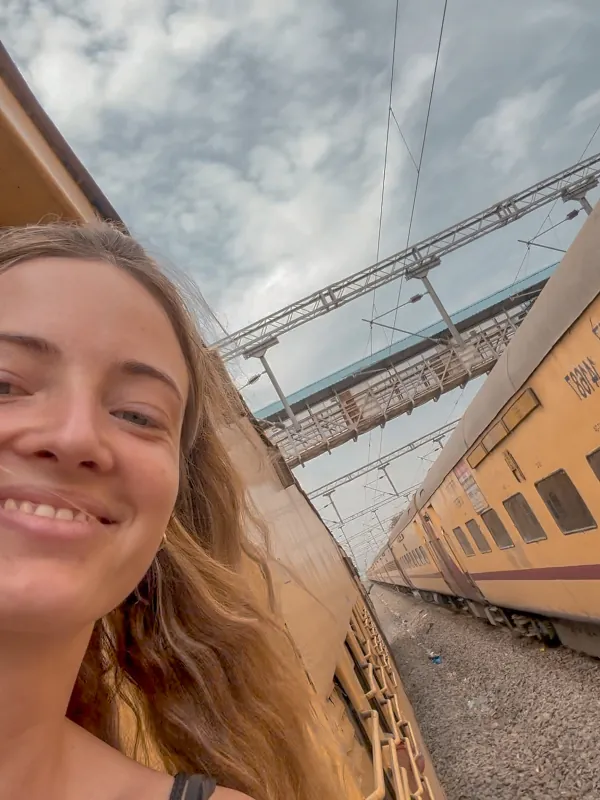
If you are travelling on a tight budget and have a lot of time available, we recommend that you experience the local means of transport. Using the same means of transport as the locals, you will also have the opportunity to fully immerse yourself in the local culture and observe the habits and customs of the people of Rajasthan.
Hiring a private driver
If you don’t have a lot of time, or if you simply want to organise a trip without stress and unpredictability, hiring a driver is certainly the choice for you. Hiring a driver in India is the more expensive but certainly more comfortable and safer option for those who want to travel in Rajasthan with peace of mind. We didn’t personally choose it, because we like to immerse ourselves in the local culture and travel on a tight budget, but after two weeks of moving around by public transport, we were dreaming of having booked it! The average price for a private driver for travel, tolls, driver’s board and lodging, and parking costs is around €600-900 a fortnight depending on the type of car and services required.
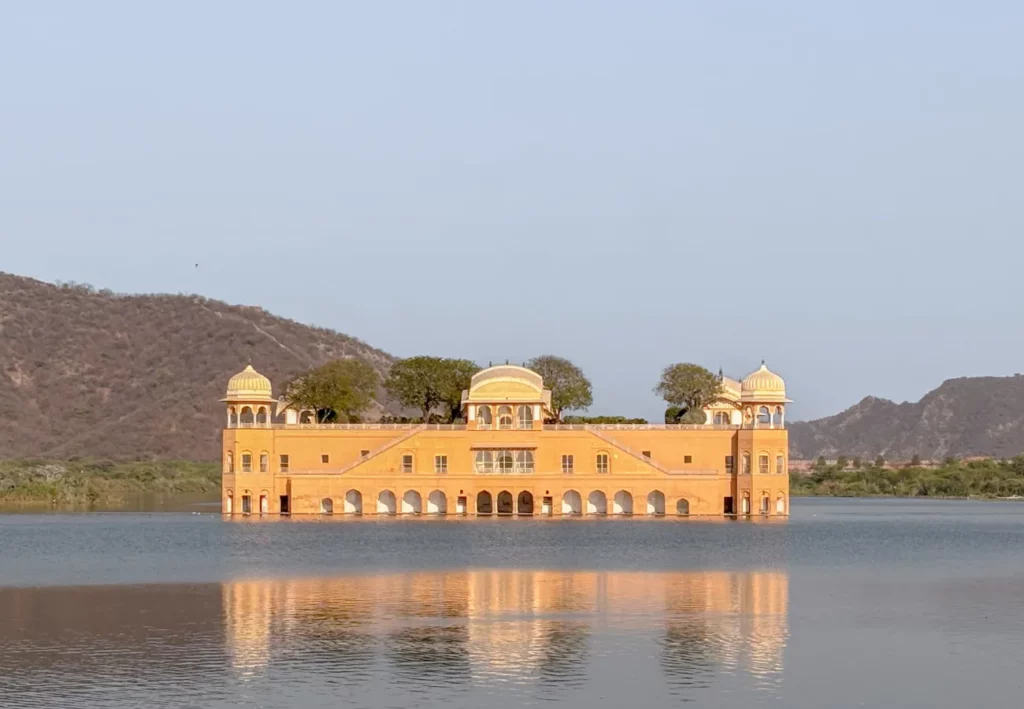
15 day Rajasthan itinerary: The top things to do and places to visit
1. New Delhi and Agra
Time: 2 to 3 days
If you want to visit Rajasthan, you will most probably land at New Delhi airport. New Delhi is a chaotic and at times ‘traumatising’ city for the unaccustomed. Indians from other parts of India have told us that New Delhi is very intense for them too! Some people will try to rip you off, especially tuk tuk drivers or street vendors, and the hustle and bustle of the city is really tiring. We do not personally recommend stopping a long time in New Delhi, but rather continue directly on your Rajasthan tour.
If you are in New Delhi, do not miss a visit to the Red Fortress, an imposing red-brick fort that is an icon of Delhi. You can also go to the Lotus Temple to enjoy its peaceful atmosphere and unique design (as the name suggests, shaped like a lotus flower!).
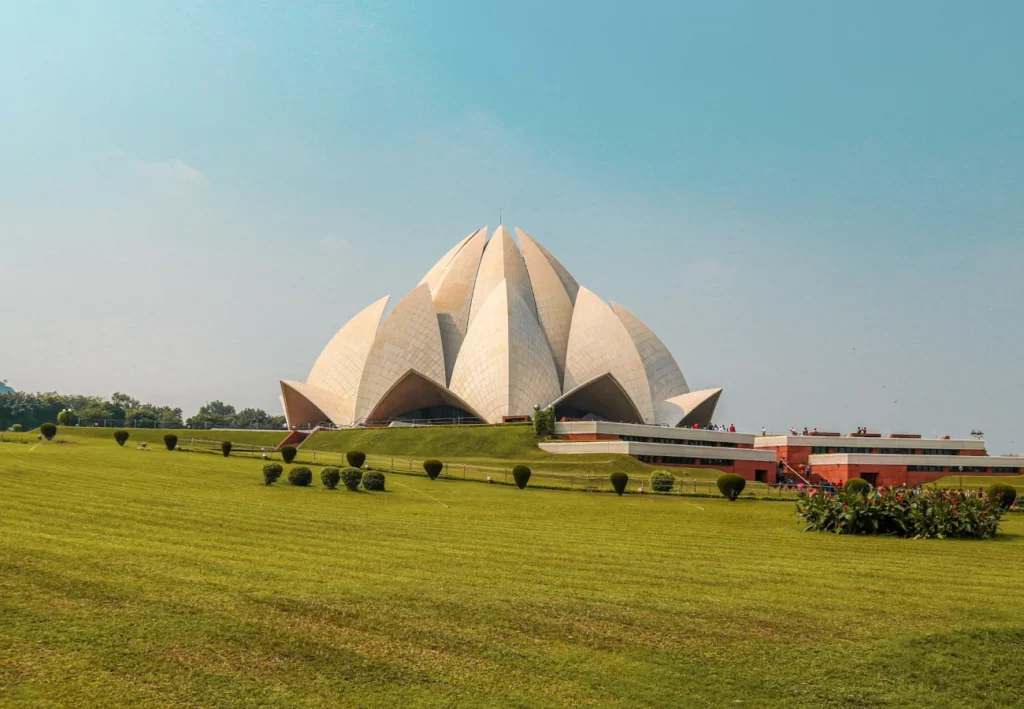
Taj Mahal
From New Delhi, either at the beginning or end of your Rajasthan tour, you absolutely must travel to Agra to admire the extraordinary magnificence and beauty of the Taj Mahal. The Taj Mahal is one of the most iconic and magnificent monuments in the world, located in the city of Agra. Built between 1631 and 1653 by the Mughal emperor Shah Jahan in memory of his beloved wife Mumtaz Mahal, the Taj Mahal is universally recognised as a symbol of eternal love and timeless beauty.
The most convenient option to reach Agra is by train. The most popular train is the Gatimaan Express, which departs from New Delhi station and arrives at Agra Cantt station in about 2 hours. From Agra Cantt station, you can take a tuk tuk to the Taj Mahal, which is about 10-15 minutes away. By bus, the journey can take 3 to 4 hours, depending on traffic.
Check here for bus schedules and ticket availability from New Delhi to Agra!
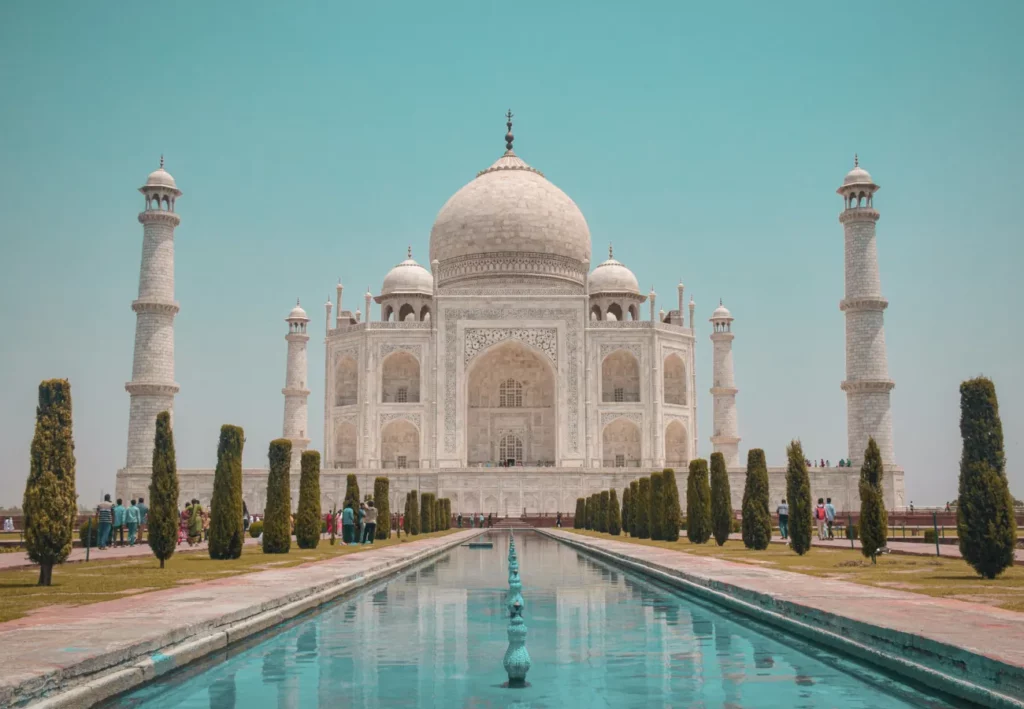
2. Jaipur
Time: 2 days
Jaipur, capital of the Indian state of Rajasthan, is known as the ‘Pink City’. This city earned its nickname due to the pink colour of its buildings, painted so in 1876 to welcome Prince Albert, consort of Queen Victoria, during his visit to India. The pink colour was chosen because it symbolises hospitality in Rajasthani culture.
Check here for bus schedules and ticket availability from New Delhi to Jaipur!

The 3 things not to miss
Hawa Mahal or ‘Palace of Winds’
This marvellous palace is the symbol of Jaipur. The ornate façade of the Hawa Mahal allowed the women of the royal family to observe street life and events without being seen, in accordance with the restrictions of the purdah, the system of gender segregation in force at the time. The 953 intricately decorated windows were also designed to allow the wind to circulate inside and keep the palace cool during the hot summer months.
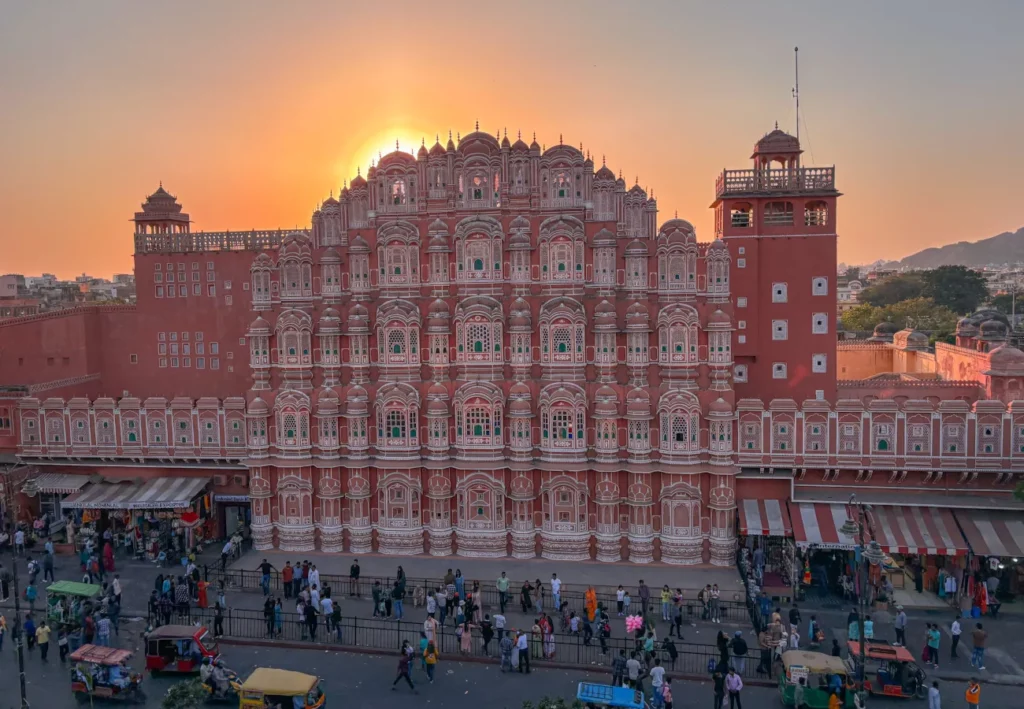
Going to the City Palace
The City Palace is an imposing structure located in the heart of Jaipur’s old city, a stone’s throw from the Palace of Winds. Built in the early 18th century, it was the residence of the Maharajas of Jaipur, the Rajputana royal family. Part of the complex continues to be the residence of the Jaipur royal family.
Visit the Amber Fort
Amber Fort is located about 11 km north of Jaipur, easily reached in about 30 minutes by tuk tuk. The palace has an imposing façade characterised by towers, ramparts and high walls. Inside, you will find rooms decorated with beautiful frescoes, a manicured garden and courtyards where you can relax and immerse yourself in the history of this beautiful palace.

Hotels in Jaipur View all
3. Pushkar
Time: 1 day
Pushkar is a small and pretty sacred town easily accessible from Jaipur. It is famous for being one of the oldest cities in India and for its namesake lake, considered sacred by Hindus. The city is also a paradise for vegetarians, as there are only vegetarian options!
Check here for bus schedules and ticket availability from Jaipur to Pushkar!
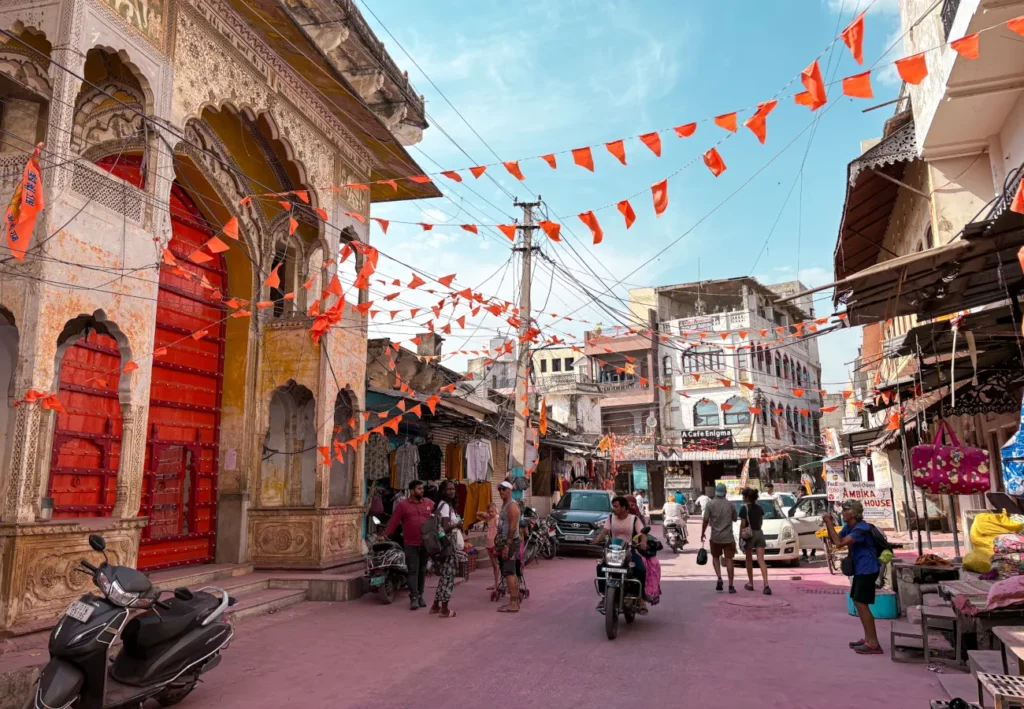
The 3 things not to miss
Sacred Lake of Pushkar at sunset
Pushkar Lake is considered one of the holiest places in India and is associated with the worship of the god Brahma, one of the three main gods of Hinduism. According to legend, the lake was created by the god Brahma by dropping a sacred lotus on the earth. Enjoying the peace of this lake at sunset is a unique experience that conveys peace and spirituality.

Visit to the Brahma Temple
The Brahma Temple, dedicated to the god Brahma, is located near the sacred lake of Pushkar. It is one of the very few temples in the world dedicated to Brahma, the creator in Hinduism. For this reason, it is a place of great religious and spiritual importance.
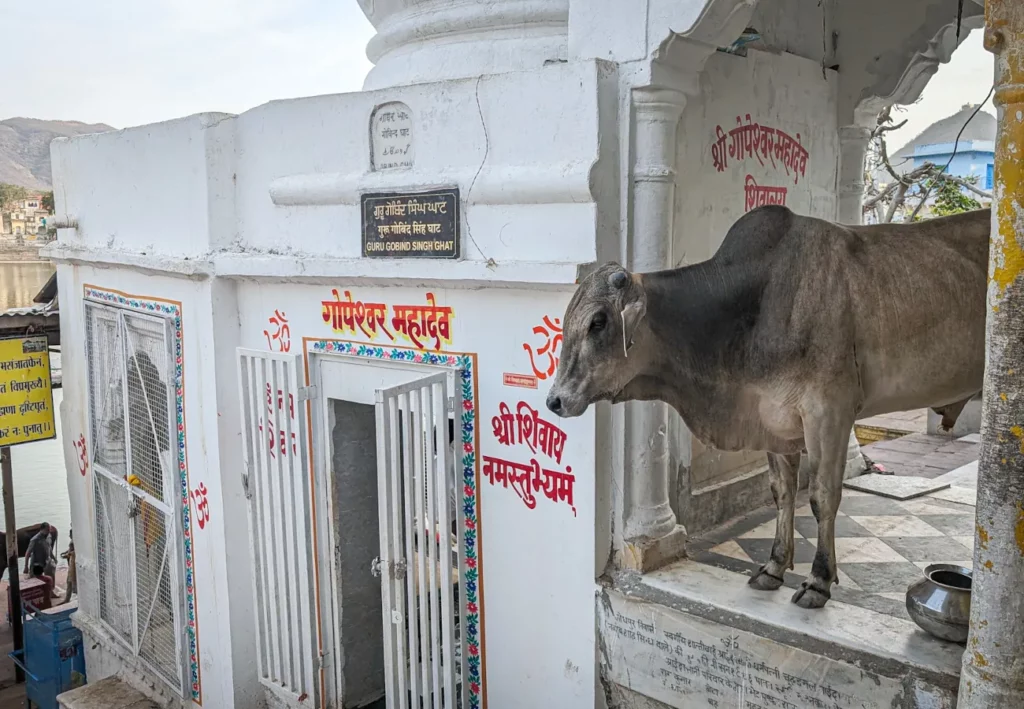
Walk on Savitri Hill
In just 30-45 minutes of walking you can reach the top of Savitri Hill to enjoy a beautiful view of Pushkar and its lake from above. At the top you will also find a small temple dedicated to Savitri, the wife of the god Brahma.
Note: If you are in Pushkar during the full moon month of (October/November), don’t miss the Pushkar Camel Fair, one of the biggest and most colourful festivals in Rajasthan! Immerse yourself in Rajasthani culture, with dance performances, camel races, fairs and craft markets!
Hotels in Pushkar View all
4. Jodhpur
Time: 2 days
Jodhpur, the ‘Blue City’ of Rajasthan, is the second largest city in Rajasthan by population. Jodhpur is a cultural and historical wonder to explore. From its ancient forts and historic buildings to its vast bazaars and artisans, Jodhpur has something for everyone to discover.
Check here for bus schedules and ticket availability from Pushkar to Jodhpur!

3 things not to miss
Visit to Meharanga Fort
Perched on a hill in the centre of town, the Meharanga Fort dates back to the 14th century and was a key place of defence and culture for the Mawar kingdom that ruled this part of India. Featuring large entertainment halls adorned with hand-carved marbles, the fort is indeed a must-see if you come to Jodhpur.
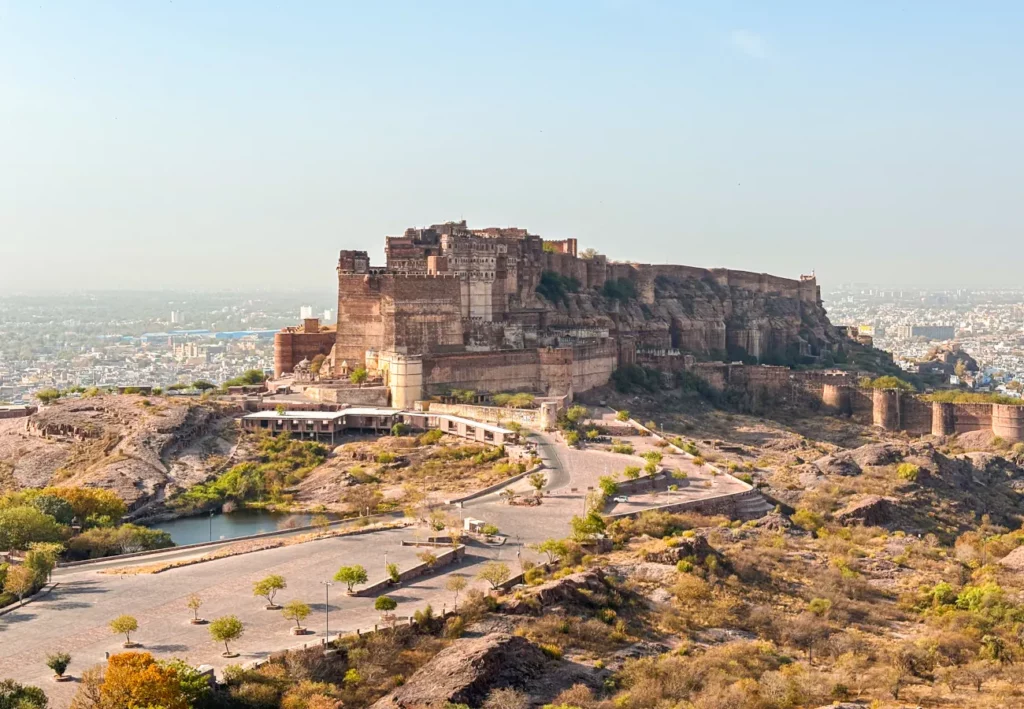
Enter Toorji Ka Jhalra Bavdi, the ancient ‘well of steps’
In the historical centre of Jodhpur is Toorji Ka Jhalra Bavdi. This ancient step-well was a place where the locals stocked up on drinking water. Carved out of sandstone in the 18th century, this traditional well is more than 4 metres deep and features carved steps that serpentine down to the base, where the water is accessible.
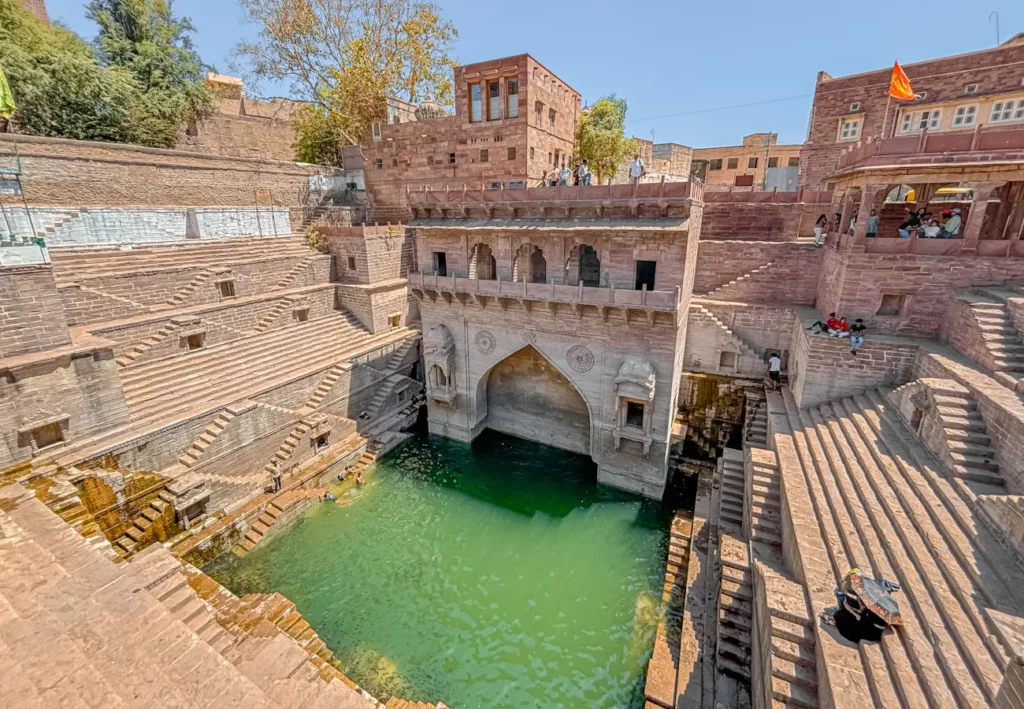
Lose yourself in the blue streets and discover local graffiti
Originally, the inhabitants painted their houses blue to help regulate the internal temperature and to discourage insects such as mosquitoes. Some parts of the city are bluer than others and feature some local graffiti. You can check our the blue corridor and Moroccan house on google maps to discover some of the most well-kept areas and points of interest for photography.
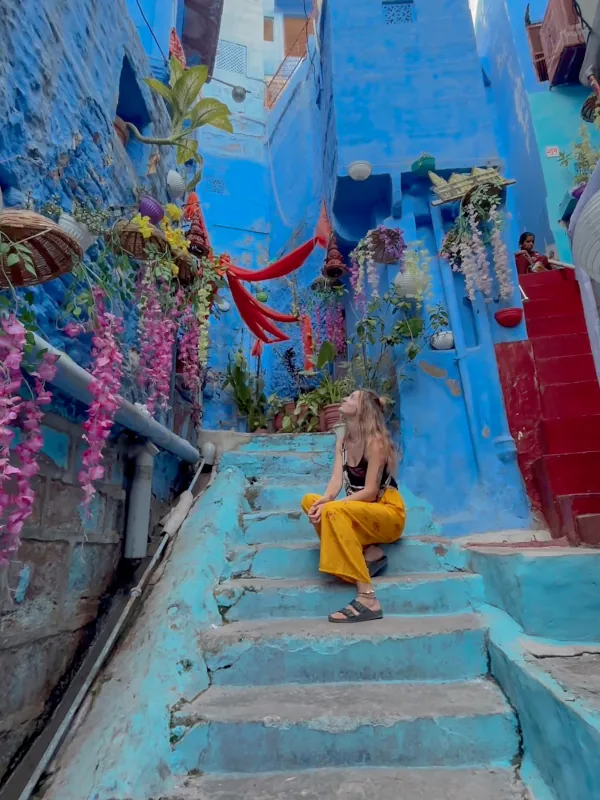
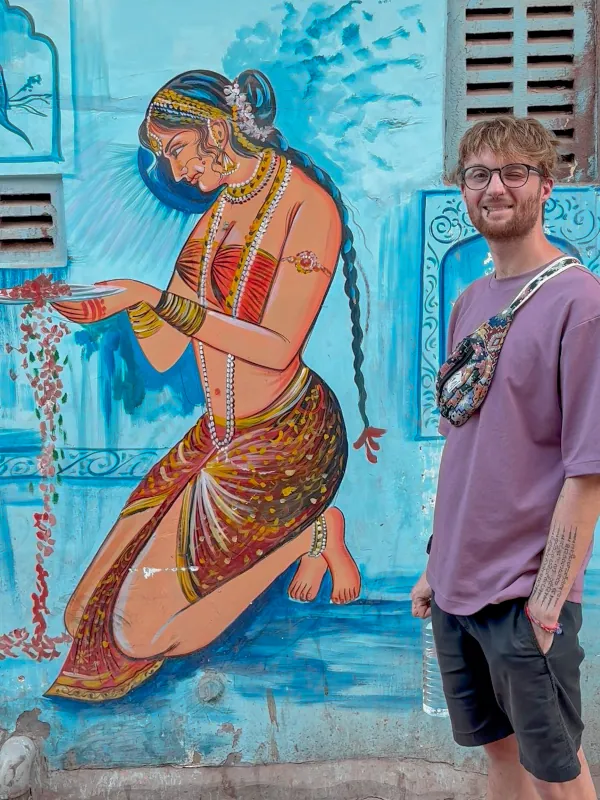
Hotels in Jodhpur View all
5. Jaisalmer
Time: 2 days
Jaisalmer, the ‘Golden city’ of Rajasthan in India, lies far to the west, on the border with Pakistan. Nestled in the dunes of the Thar desert, Jaisalmer is an oasis in this hot and arid region. Exploring its fort is like stepping back in time to the Rajput era, and dining in the Thar desert is a unique experience not to be missed.
Check here for bus schedules and ticket availability from Jodhpur to Jaisalmer!
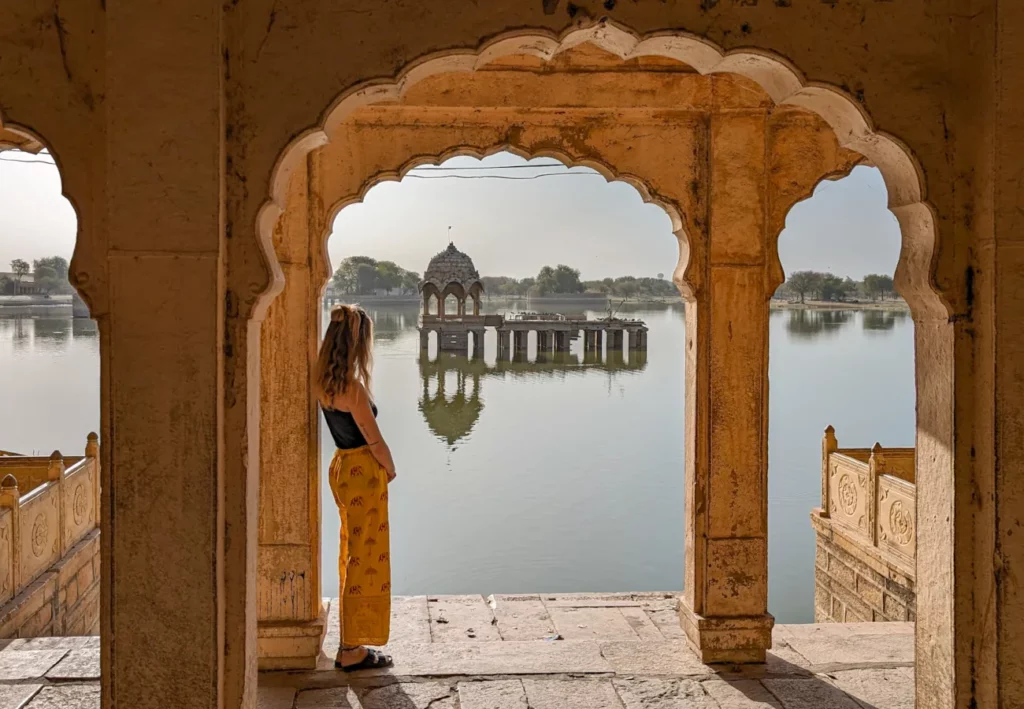
3 things not to miss
Visit the Jaisalmer Fort
The Jaisalmer Fort is the symbol of the city of Jaisalmer. It sits atop the hill in the centre of the city, looking out over the modern part of the city with a 360-degree view. Made of sandstone, the fort glows yellow under the hot desert sun, giving it the name ‘Golden Fort’. Within its walls are shops, markets and hotels.
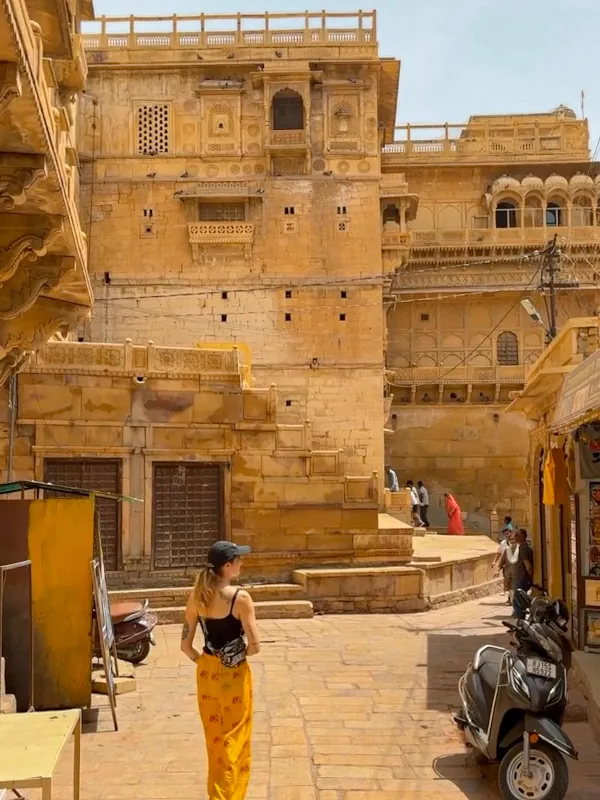
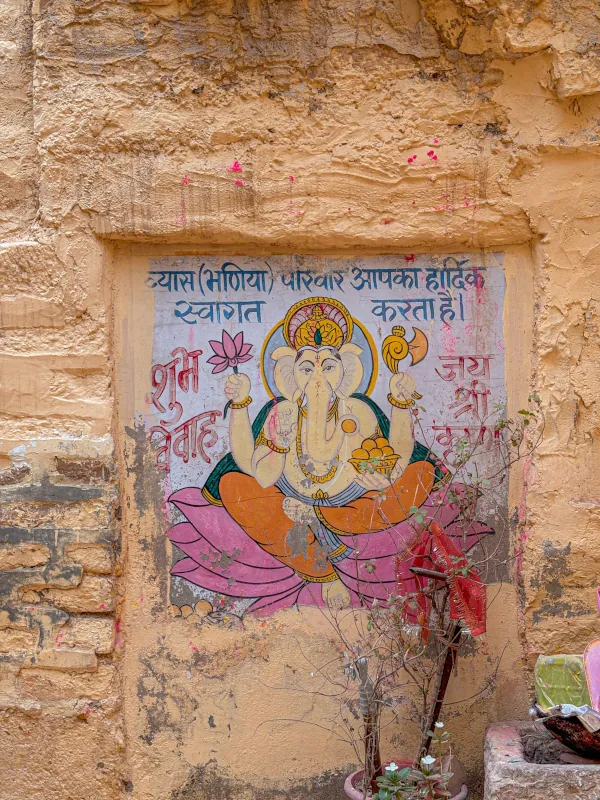
Visiting Jain temples
Intricately carved in sandstone and rich in history, the Jain temples are a wonder to explore. Dating back to the 12th century, these temples possess imposing hand-carved sandstone stupas and beautiful intricately patterned walls. One can easily spend more than an hour immersing oneself in the peace and tranquillity of these temples and practising meditation.
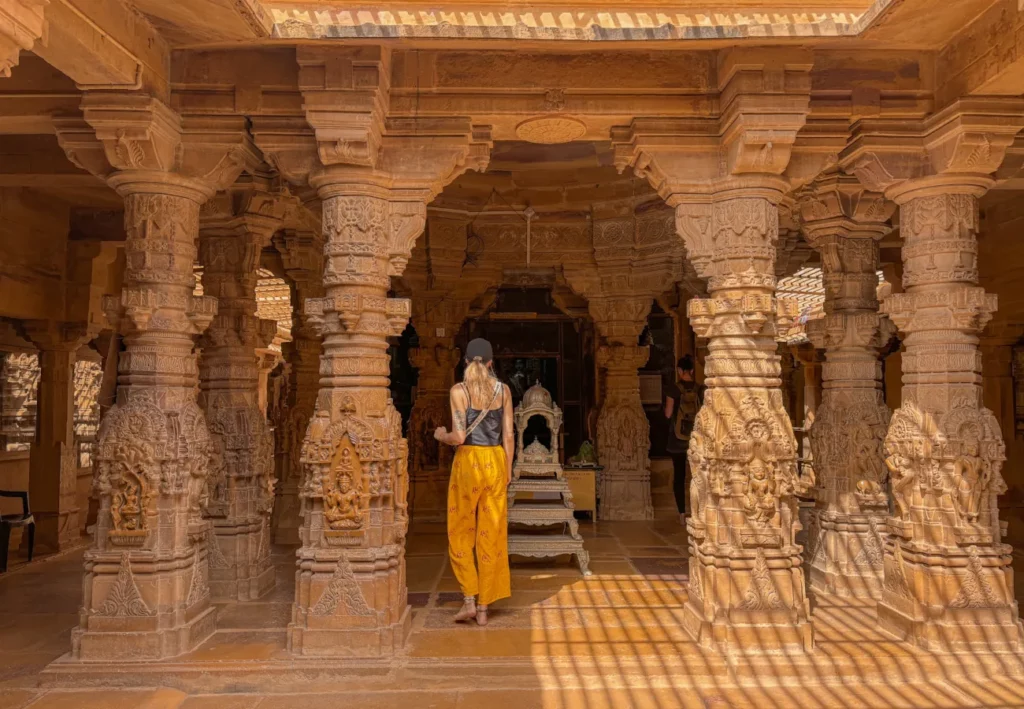
Exploring the Thar Desert on desert safari
If you are in Jaisalmer, you must indulge in some activity in the Thar Desert. Whether it be trekking, camel rides, overnight camping or a 4×4 experience, the options are numerous. Most accommodation and hostels will assist you in organising your desert tours and can recommend various experiences to suit different budgets.
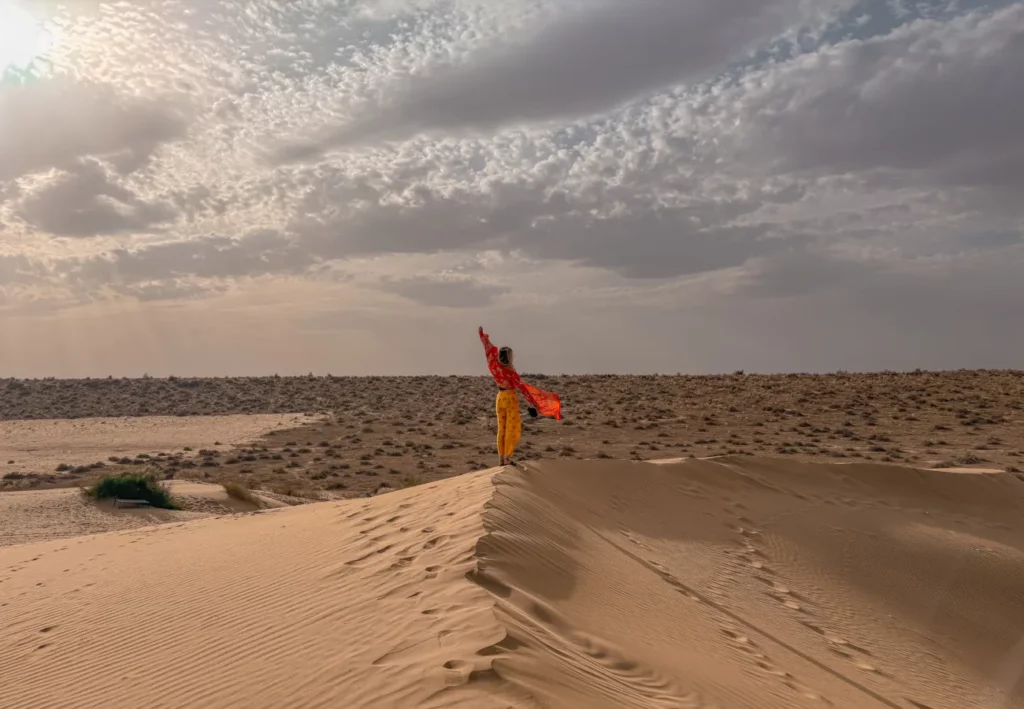
Hotels in Jaisalmer View all
6. Udaipur
Time: 2 days
Udaipur, also known as the ‘Venice of the India’, is famous for its magnificent lakes, sumptuous palaces and lush gardens. Udaipur is a quiet and pleasant city to visit, providing a pleasant and relaxing end to the city tour in Rajasthan.
Check here for bus schedules and ticket availability from Jaisalmer to Udaipur!
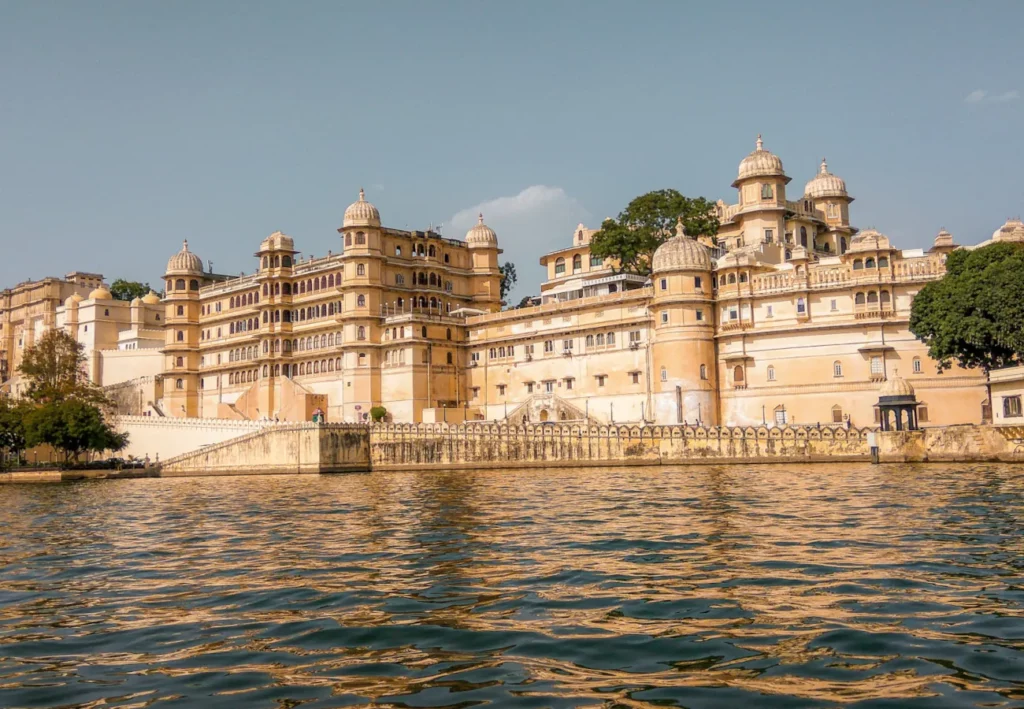
3 things not to miss
Visit to the Royal Palace
The Udaipur City Palace, a majestic white marble structure overlooking Lake Pichola, is one of the city’s main attractions. Offering the best views of the city, this 16th century palace is a masterpiece of Rajput architecture. Inside, you will find intricate courtyards, carved balconies and shining frescoes telling the epic stories of the past.
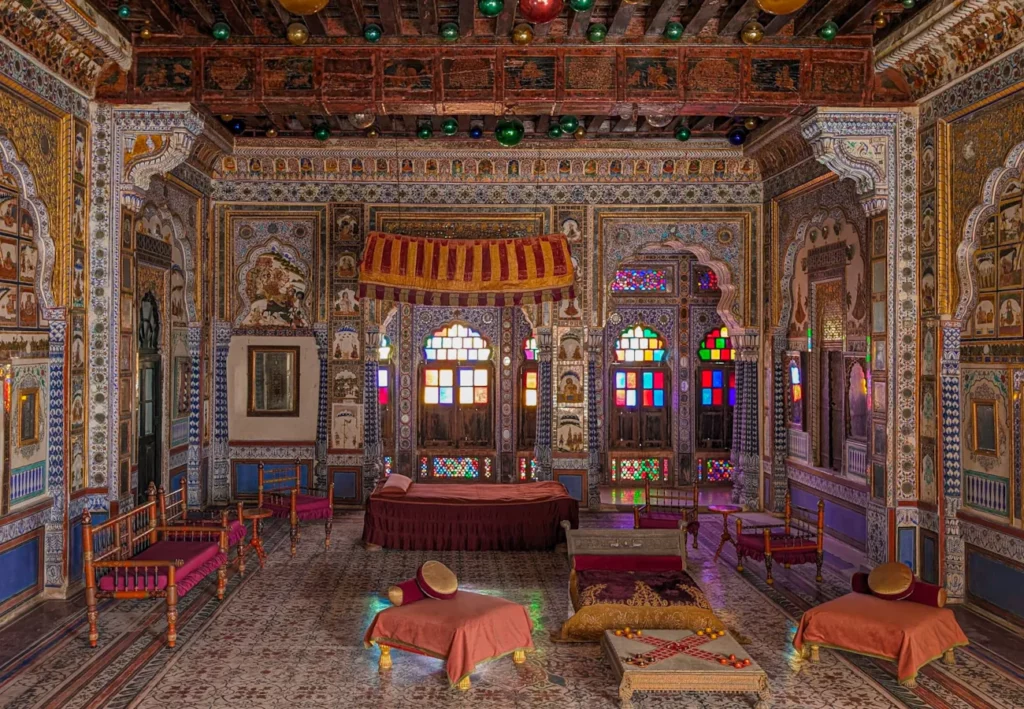
Tour of Lake Pichola
To fully enjoy the Veneza of India, you cannot miss a boat ride on Lake Pichola, the largest and most famous of the lakes in Udaipur. The lake has a picturesque landscape, surrounded by green hills and islets. We especially recommend the boat ride at sunset to enjoy the unforgettable atmosphere.
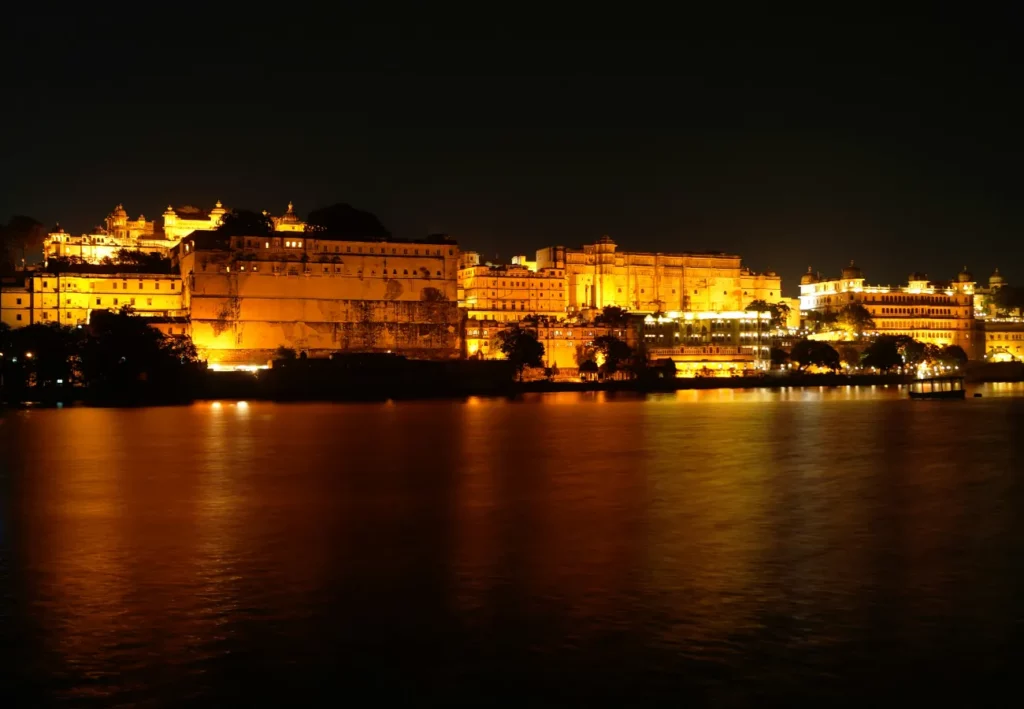
Jagdish temple
The Jagdish Temple is one of the most famous and sacred temples in Udaipur, dedicated to Lord Vishnu. What makes this temple truly spectacular is its intricate stonework. Every detail, from the expressions on the faces of the deities to the intertwined floral motifs, is executed with remarkable precision and perfection.
Hotels in Udaipur View all
Other places not to be missed
If you decide to hire a driver for your stay in Rajasthan, you can add these day trips to the list. These can also alternatively be reached by local buses or organised tours from the various cities. In this case, however, you must have more than two weeks’ time available due to the slow pace of travel.
7. Temples of Ranakpur
The Ranakpur Temples are a complex of Jain temples located in the heart of the Aravalli Hills in western Rajasthan, about 90 kilometres north of Udaipur. These temples are considered among the most important Jain religious sites in India. They are renowned for their extraordinary architectural beauty and spiritual atmosphere.
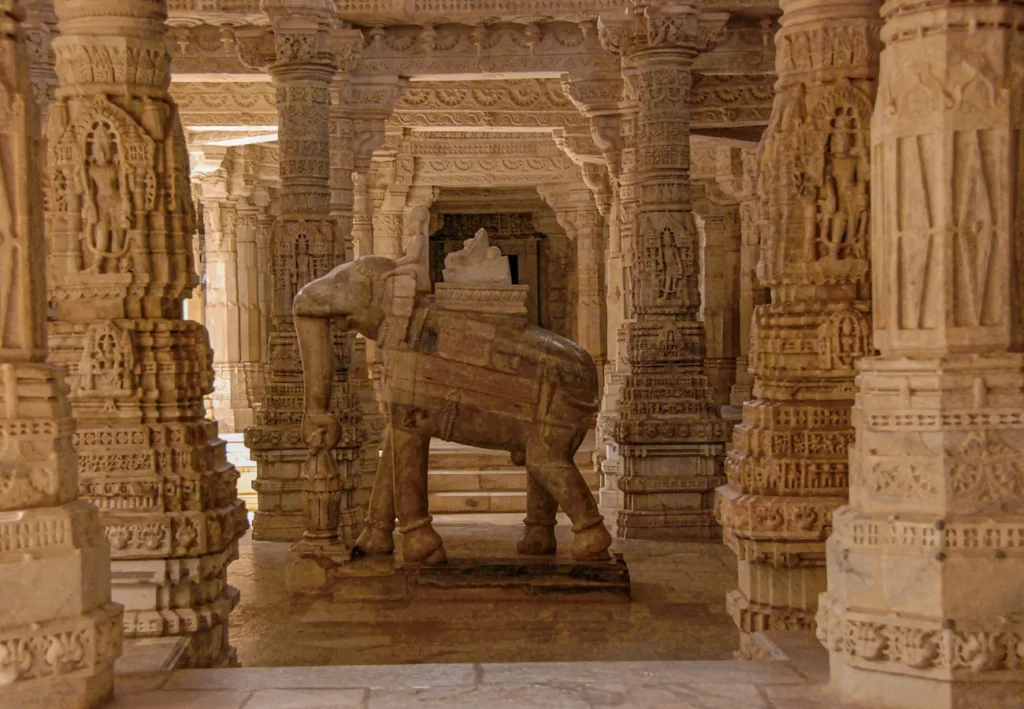
Fun fact: Jainism is an ancient religion based on non-violence and is considered the most ecological religion in existence: those who practise it follow a vegan diet and are committed to reducing their impact on the planet as much as possible. Another principle is that there are no absolute truths, which is why you will find some columns crooked: it serves to remind the faithful that perfection does not exist.
8. Bikaner
Bikaner is a city in the Thar Desert in north-western Rajasthan, rich in history and beautiful Rajasthani architecture. If you are in Bikaner, you cannot miss the Junagarh Fort. This magnificent fort dates back to the 16th century and offers an immersion into the rich history and architecture of Rajasthan. Also, make an excursion to the temple of Karni Mata (the temple of rats!), located about 30 kilometres from Bikaner. This temple is famous for its unusual inhabitants: thousands of rats considered sacred.
Check here for bus schedules and ticket availability from Jaisalmer to Bikaner!
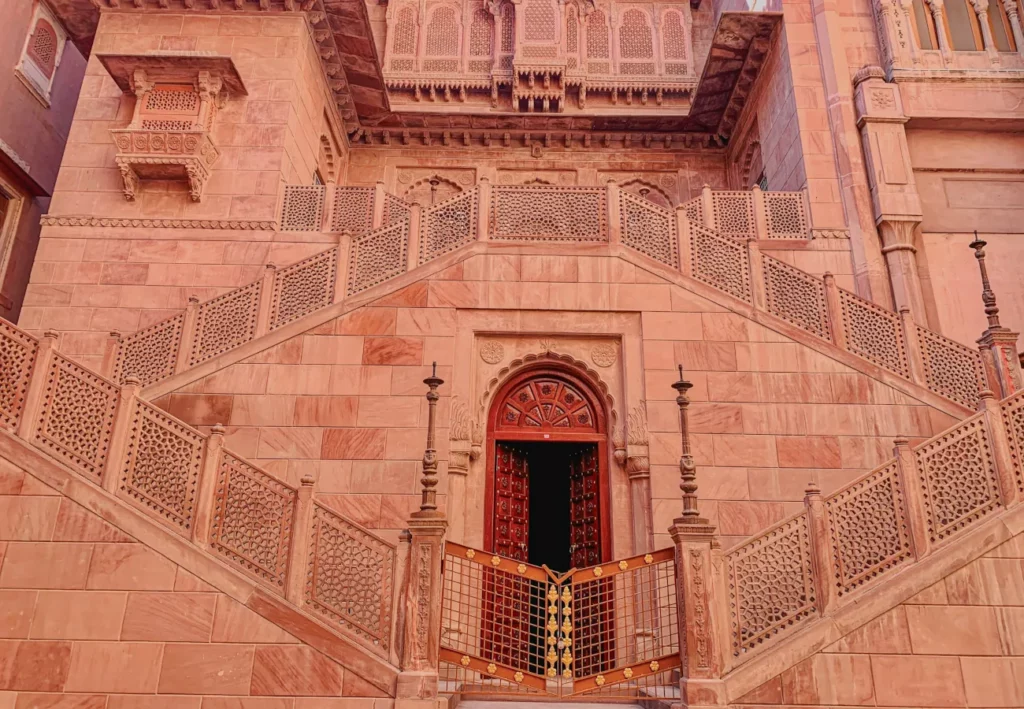
9. Abhaneri Well
The Abhaneri Well is one of the deepest and most impressive stepped wells in India. Located about 95 kilometres northeast of Jaipur, the well was mainly used to collect and store rainwater during dry periods for domestic, agricultural and livestock use. The locals descended as many as 3,500 steps to collect the water!
Is Rajasthan safe? (for solo female travellers)
I have been asked by some friends and girlfriends if Rajasthan is safe for solo female travellers. To this question I answer with: generally yes, but with some caution required. In general, the north central belt of India is more intense and chaotic than the northern mountains or southern India. There are more people, generally more poverty, and this is always associated with a bit more risk. For lonely girls, I would suggest that they prepare themselves psychologically before their arrival in Rajasthan for being approached by strangers, for very intense stares at them, and for many requests for selfies.
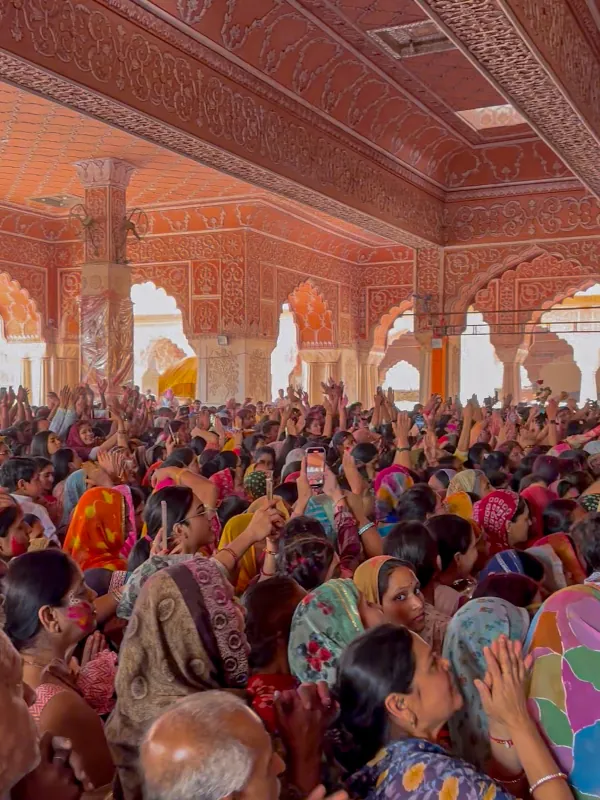
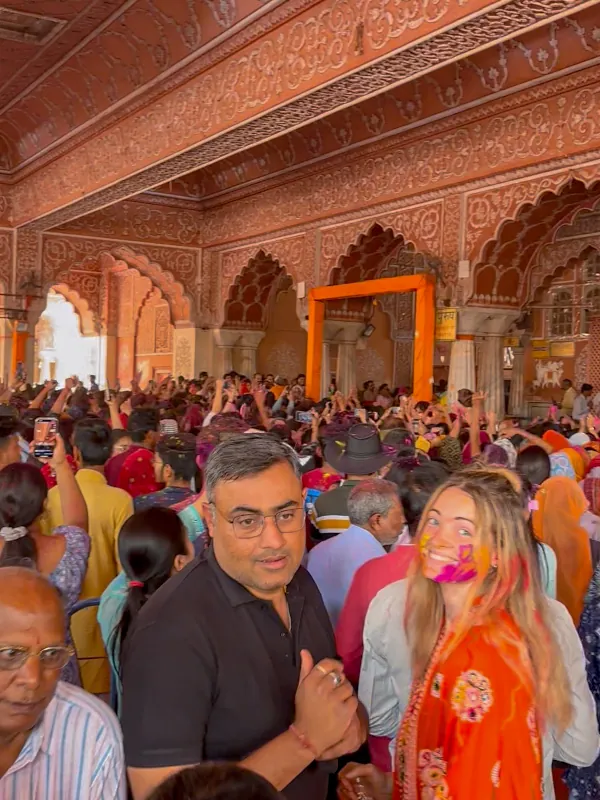
Tips for making the most of Rajasthan
- Stay in hostels and try to tag along with groups of other young people to avoid being alone whilst travelling and seeing sights.
- Avoid walking alone in the streets at night. Take a tuk tuk to reach your destination safely rather than risk it.
- If single men or groups of men ask you for a selfie, refuse at the cost of being rude. These are the moments where those who do not have good intentions will take the opportunity to stretch their hands.
- If you take public transport, try to sit next to other women. Most buses will give you the option to choose a pink seat, i.e. sit next to other girls.
- Keep your eyes open and use common sense is good advice always, but especially for Rajasthan. Judge situations without ever underestimating them!
- If you happen to find yourself in a situation where you do not feel comfortable, ask the local people for help. Most people you meet will be kind and willing to help you out. Anyone who witnesses an injustice will be ready to defend you and make you feel safe!
Best time to visit Rajasthan
✅ The best time to visit Rajasthan is the cooler period between October and March. Temperatures range between 25-30°C during the day and 10-15°C at night.
❌ April to July is the hottest part of the year, with temperatures often touching 40-45°C. Avoid Rajasthan in summer, unless you like to roast! However, we visited at the end of March and, although temperatures reached 40°C in the midday sun, it was pleasant to explore the city in the morning and evening. If you can tolerate the heat well, you will certainly also find the cheapest bargains on accommodation during this period. Between July and September is monsoon season, with rain most days and temperatures of 35°C . Many hotels and holiday homes are closed during this period and tourist buses have reduced timetables. This is the worst time of year to visit, so we advise against it!

Other must-see regions in India
If you have more time to visit India, there are many other regions to explore and not to be missed. If you are in India during the summer (April to June), we recommend going to the mountains of Himachal Pradesh. Read our articles here if you want to learn more about the must-do treks in this region!
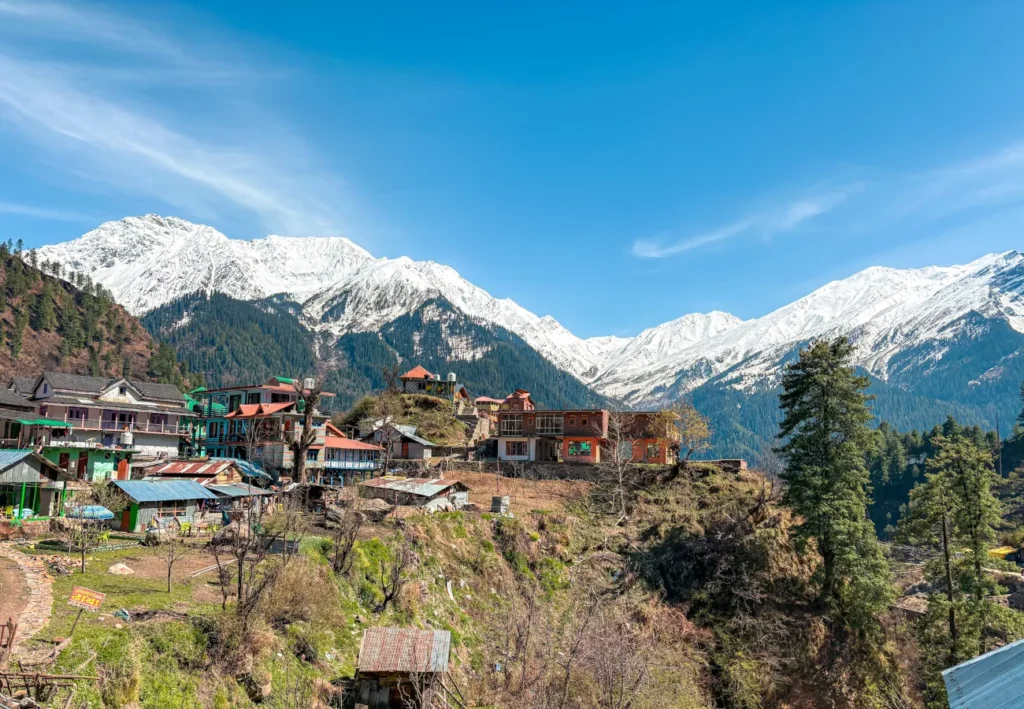
If you are in India in the high season (October to March), we recommend heading south to Goa or the Kerala region. Read our articles here to find out more!
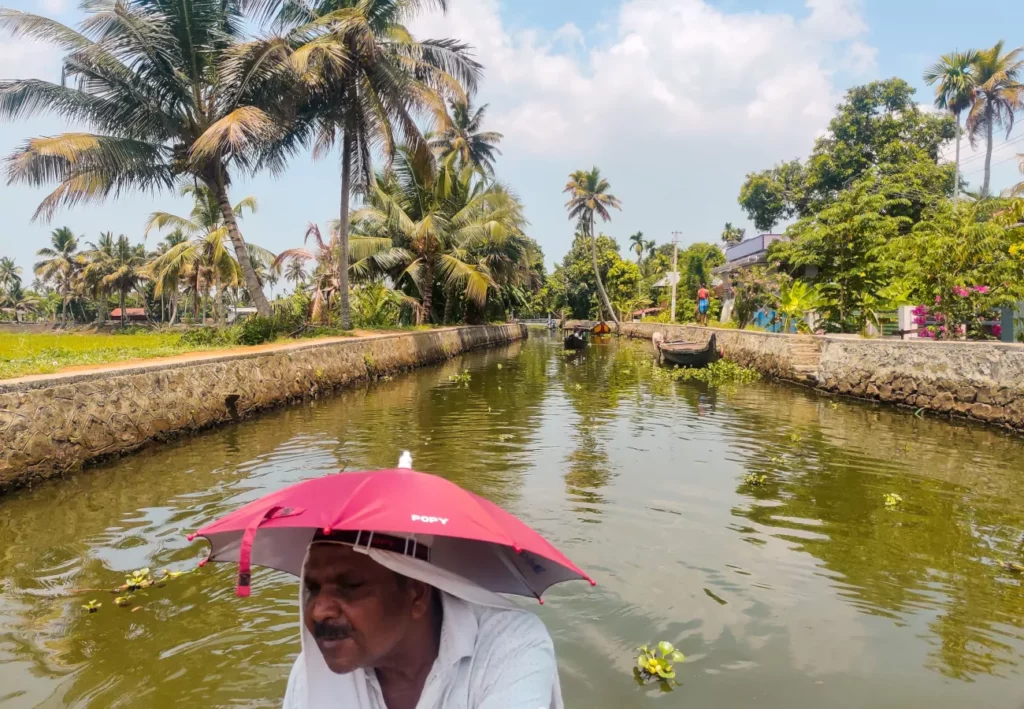
Did you find our 15 day Rajasthan itinerary useful? Leave us a comment below! If you have also been to Rajasthan or are planning your own trip to India, let us know!
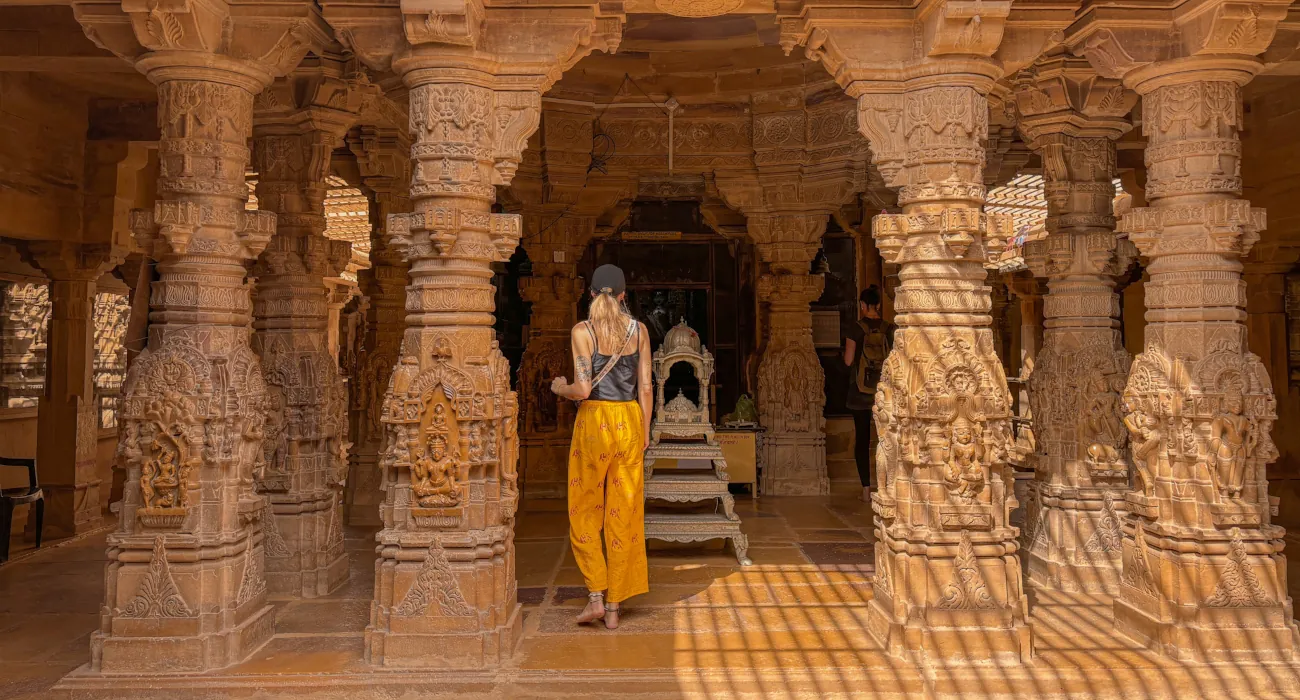
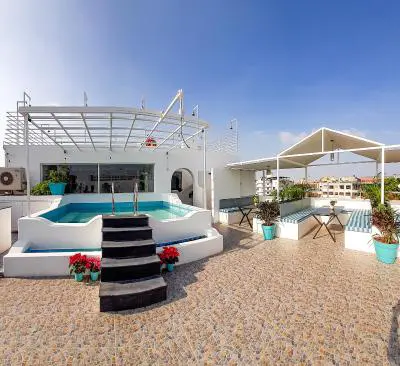

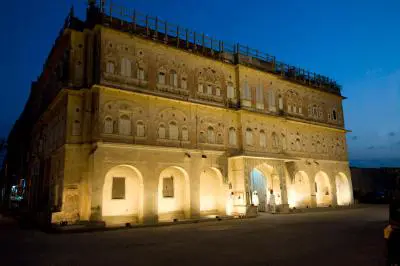


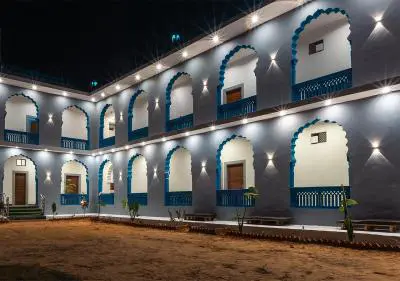
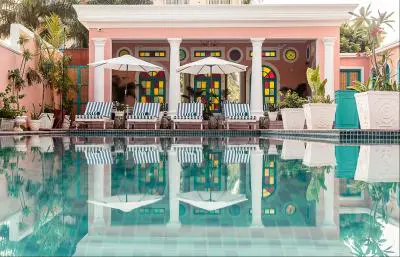
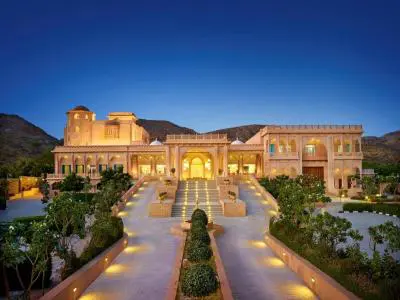








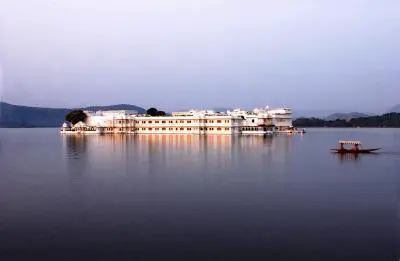



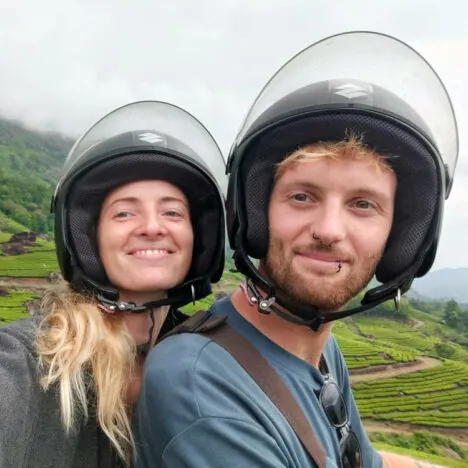

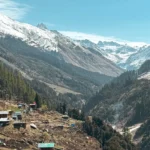
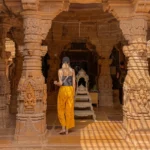

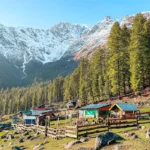
Leave a Reply